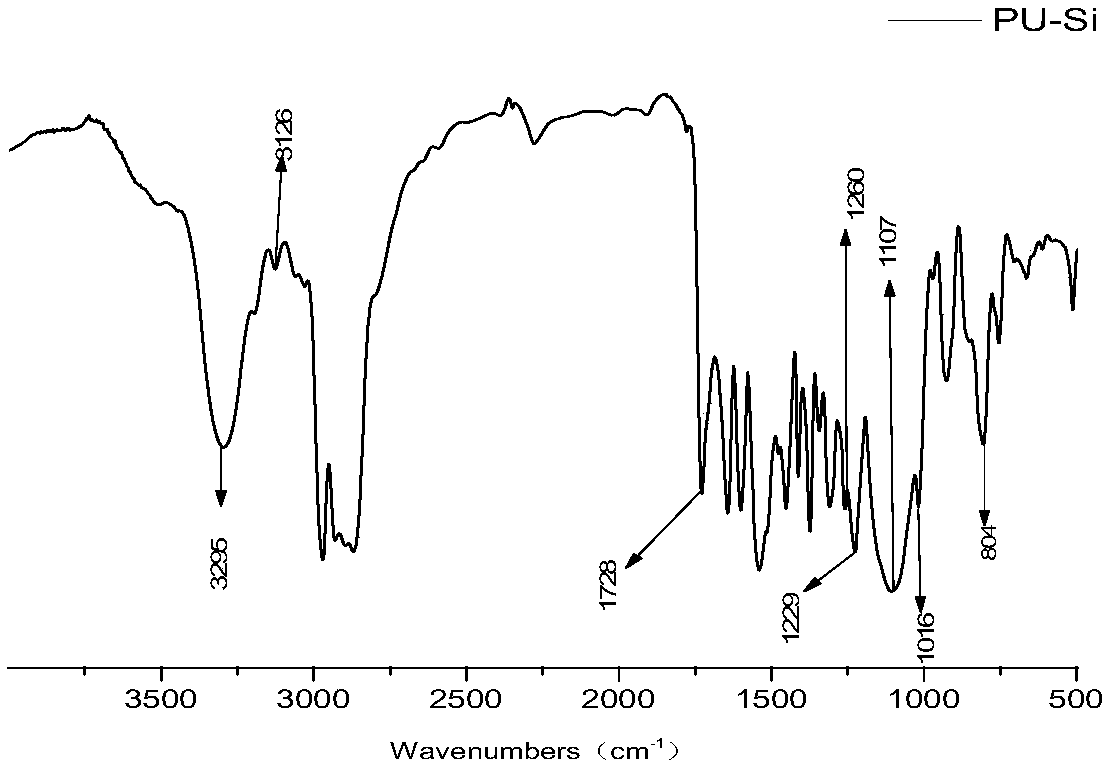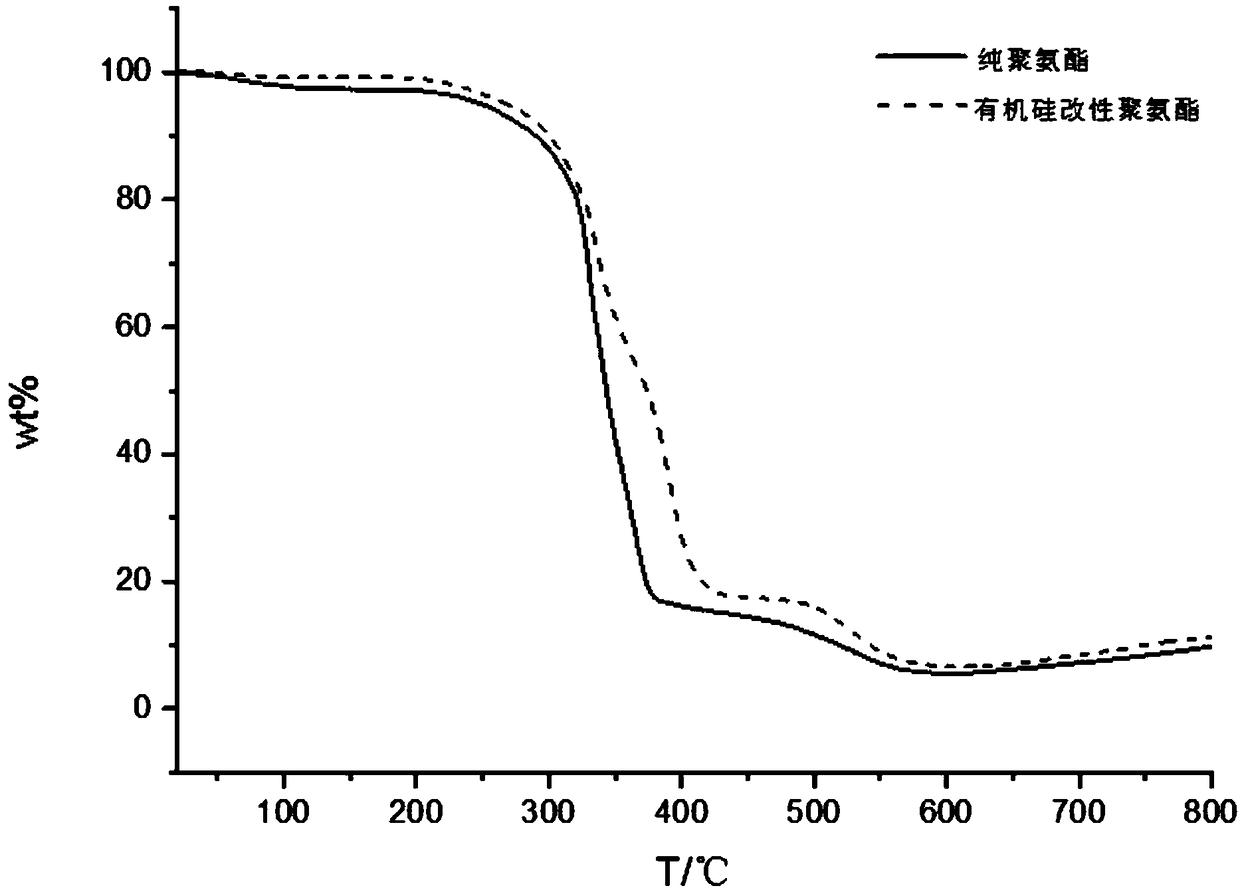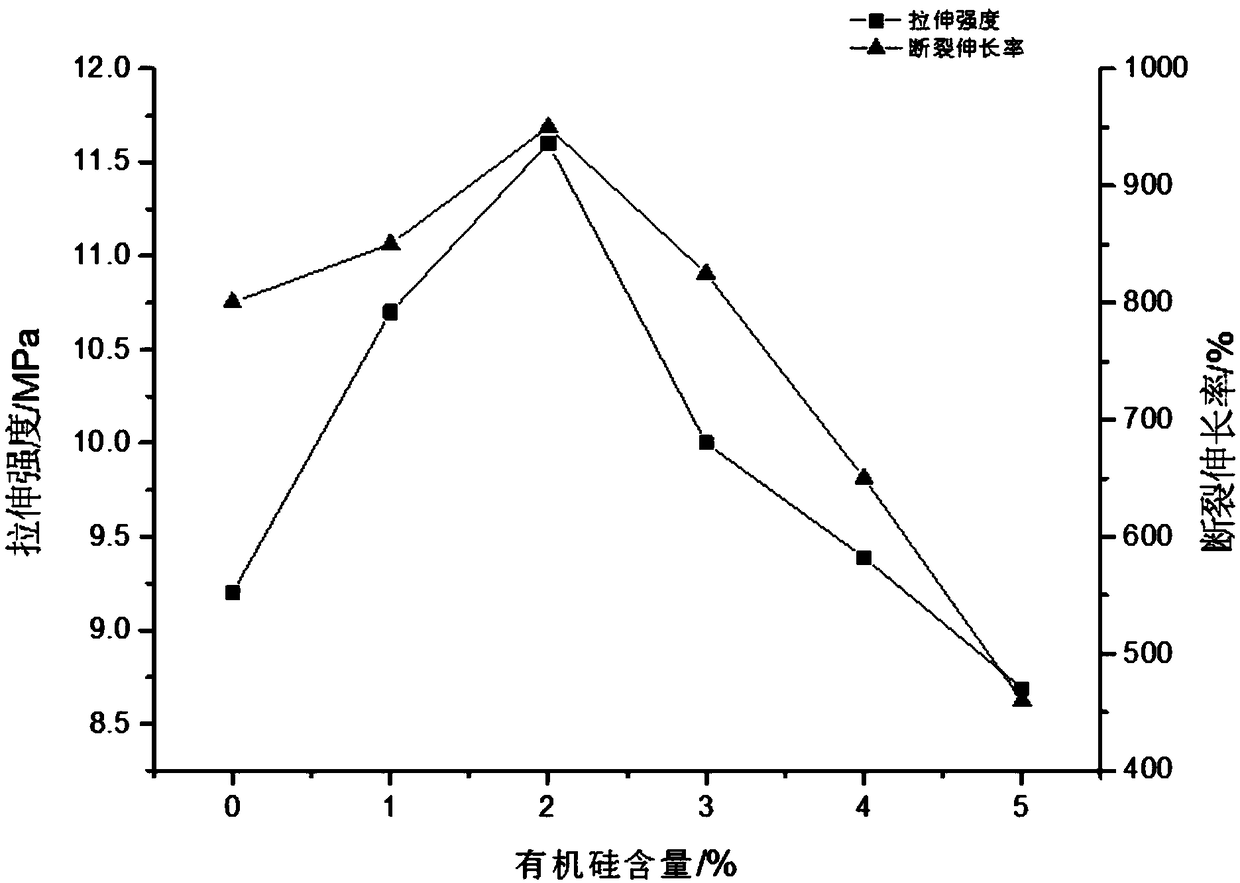Organic silicon modified flame-retardant polyurethane and preparation
A polyurethane and silicone technology, applied in polyurea/polyurethane adhesives, adhesive types, adhesives, etc., can solve problems such as low temperature resistance, flammability, flame retardancy, poor stain resistance, and poor weather resistance. To achieve the effect of improving product performance, excellent mechanical properties, and improving flame retardancy
- Summary
- Abstract
- Description
- Claims
- Application Information
AI Technical Summary
Problems solved by technology
Method used
Image
Examples
Embodiment 1
[0036] Add 20 parts by weight of double-ended hydroxyethyl silicone oil with a molecular weight of 2000, 4 parts by weight of PTMG-1000, and a catalyst into the reaction bottle, and heat to 120° C. for 2 hours in vacuum. Cool down to room temperature, add 19 parts by weight of MDI-50, and heat up to 80°C for reaction. Titrate the isocyanate content with the di-n-butylamine acetone method, reach the predetermined value, stop the reaction, and obtain A 1 components.
[0037] Add 20 parts by weight of PPG-1000D and 8 parts by weight of PPG-3050D into the reaction bottle, heat to 120°C and vacuum dry for 2 hours. Cool down to room temperature, add 20 parts by weight of MDI-50, heat up to 80°C for reaction, titrate the isocyanate content with the di-n-butylamine acetone method, and stop the reaction to obtain A 2 components.
[0038] Add 80 parts by weight of PPG-2000D, 40 parts by weight of PPG-3050D and 0.48 parts by weight of catalyst into the reaction bottle, and dry it unde...
Embodiment 2
[0041] Add 20 parts by weight of double-ended hydroxypropyl silicone oil with a molecular weight of 3000, 5 parts by weight of PCL-2000, and a catalyst into the reaction bottle, and heat to 120° C. for 2 hours in vacuum. Cool down to room temperature, add 16 parts by weight of MDI-50, and heat up to 60°C for reaction. Titrate the isocyanate content with the di-n-butylamine acetone method, reach the predetermined value, stop the reaction, and obtain A 1 components.
[0042] Add 20 parts by weight of PEG-2000 and 4 parts by weight of PPG-3050D into the reaction bottle, heat to 120°C and vacuum dry for 2 hours. Cool down to room temperature, add 17 parts by weight of MDI-50, and heat up to 80°C for reaction. Titrate the isocyanate content with the di-n-butylamine acetone method, reach the predetermined value, stop the reaction, and obtain A 2 components.
[0043] Add 100 parts by weight of PPG-2000D, 20 parts by weight of PPG-3050D and 0.48 parts by weight of catalyst into th...
Embodiment 3
[0046] Add 20 parts by weight of double-ended hydroxypropyl polyether modified silicone oil with a molecular weight of 1000, 4 parts by weight of PPG-3050D, and a catalyst into a reaction bottle, and heat to 120° C. for 2 hours in vacuum. Cool down to room temperature, add 18 parts by weight of MDI-50, and heat up to 90°C for reaction. Titrate the isocyanate content with the di-n-butylamine acetone method, reach the predetermined value, stop the reaction to obtain A 1 components.
[0047] Add 40 parts by weight of PPG-4000D and 10 parts by weight of PPG-3050D into the reaction bottle, heat to 120°C and vacuum dry for 2 hours. Cool down to room temperature, add 27 parts by weight of MDI-50, and heat up to 70°C for reaction. Titrate the isocyanate content with the di-n-butylamine acetone method, reach the predetermined value, stop the reaction, and obtain A 2 components.
[0048] Add 60 parts by weight of PPG-2000D, 30 parts by weight of PPG-3050D and 0.36 parts by weight of...
PUM
 Login to View More
Login to View More Abstract
Description
Claims
Application Information
 Login to View More
Login to View More - R&D
- Intellectual Property
- Life Sciences
- Materials
- Tech Scout
- Unparalleled Data Quality
- Higher Quality Content
- 60% Fewer Hallucinations
Browse by: Latest US Patents, China's latest patents, Technical Efficacy Thesaurus, Application Domain, Technology Topic, Popular Technical Reports.
© 2025 PatSnap. All rights reserved.Legal|Privacy policy|Modern Slavery Act Transparency Statement|Sitemap|About US| Contact US: help@patsnap.com



